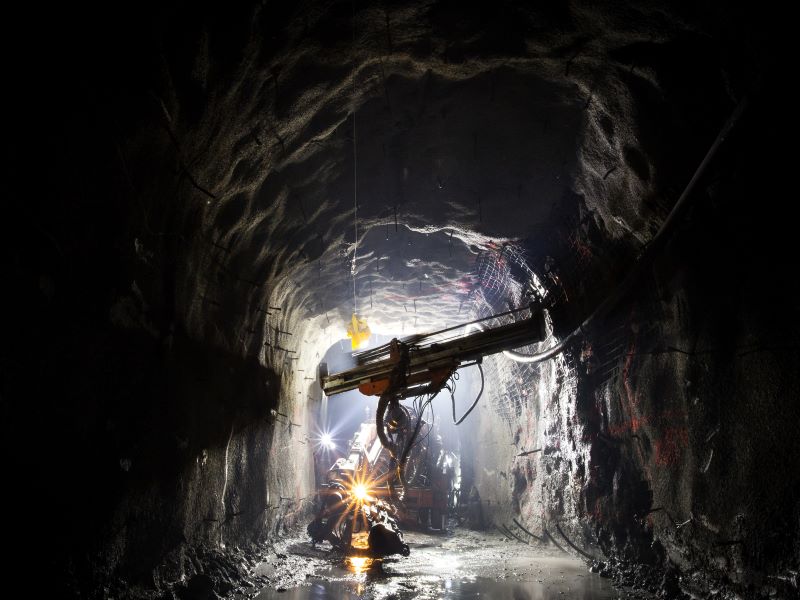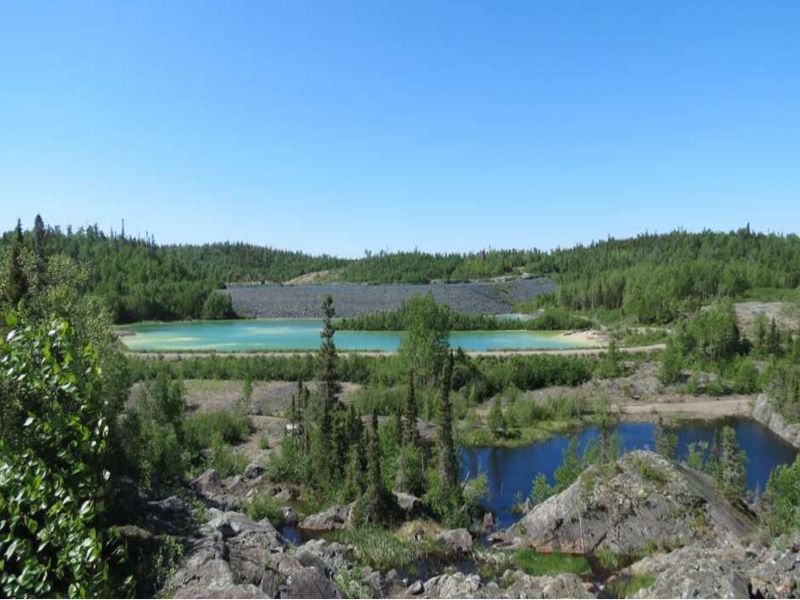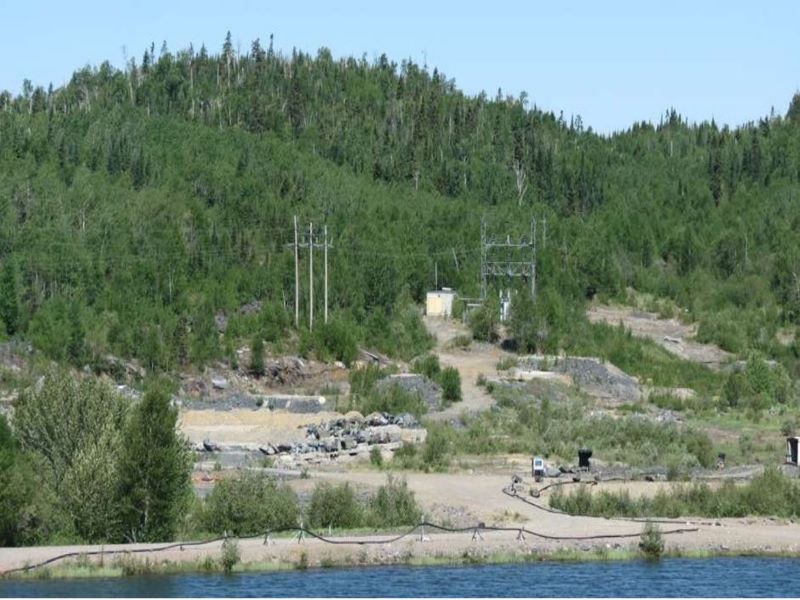The Superior zinc and copper polymetallic project is a brownfield underground mine proposed to be developed in the province of Ontario, Canada, by base metal mining company Metallum Resources.
The project is based on the Winston and Pick deposits with the former in active mining from 1988 until its closure in 1998 due to unfavourable zinc prices. The Superior property was previously owned by Superior Lake Resources, an Australian mineral exploration company. Superior Lake sold the project to Metallum Resources in April 2021.
A bankable feasibility study (BFS) for the zinc and copper project was completed in August 2019 while an updated technical report on the mineral resource estimate was completed in January 2021. A new feasibility study based on the BFS and incorporating the January 2021 mineral resource estimate was completed in September 2021.
Detailed engineering and financing decisions for the mine development are planned to be taken by the end of 2021.
Superior zinc and copper polymetallic project location and geology
The Superior zinc and copper project is located approximately 180km east of Thunder Bay in north-western Ontario, Canada. The underground mining project encompasses 81 mining claims in a single contiguous group covering 175km².
The polymetallic project is situated within the Big Duck Lake Volcanic Belt in the larger Archean Shebandowan-Wawa Volcanic Belt of the Superior Province of the Canadian Shield.
The Winston Lake Sequence within the Big Duck Lake contains mainly felsic to intermediate volcanics, volcaniclastics, and sediments with a minor mafic flow. The sequence is approximately 2km and 6km in thickness and strike length, respectively.
Mineralisation and reserves of the Winston deposit
The Winston deposit is a massive sulphide sheet with a strike length of approximately 500m and a vertical depth of up to 700m. The deposit dips at 50° with an average thickness of 7m. The deposit has two primary ore types with the most common being a fine-to-medium-grained homogenous mixture of sphalerite and pyrrhotite. The less common ore type is a medium to coarse-grained sphalerite with minor amounts of pyrrhotite, pyrite, and chalcopyrite.
Located 1km below the Winston deposit, the Pick deposit has an average strike length of approximately 250m. The Pick orebody comprises fine-grained sphalerite, and pyrrhotite, with traces of pyrite and chalcopyrite.
Indicated resources at the project are estimated at 2.07 million tonnes (Mt) grading 17.9% zinc, 0.8% copper, 0.4g/t gold, and 33.6g/t silver, as of January 2021. Inferred resources are estimated at 0.27Mt grading 16.2% zinc, 1.0% copper, 0.3g/t gold, and 37.2g/t silver.
Probable reserves were estimated at 1.96Mt, grading 13.9% zinc, 0.6% copper, 0.2% gold, and 26.2% silver, as of August 2019.
Mining methods of the Superior project
The extraction of ore from the Superior zinc and copper polymetallic project will be performed using long-hole open stoping (LHOS) with a cemented paste fill method.
A ramp will be developed from the surface, adjacent to the historical workings of Zenmac, to the upper Pick deposit, from where a hanging wall ramp will enable access to the lower orebody.
The decline will be developed using twin-boom jumbos, which will also be used to execute ground support installation. All accesses and drives will be developed with a height and width of 4.5m each. The 5m-wide and 5.5m-high main decline ramp will accommodate 40t trucks.
The deposit will be split into Pick Upper, Pick Middle (A & B) and Pick Lower (A & B) mining areas with each area comprising panels of up to five levels. The narrower parts of each panel are planned to be mined top-down while the bottom-up approach will be implemented for the thicker areas.
Ore processing at Superior polymetallic project
The processing facility will include a comminution circuit and a two-stage flotation circuit each for copper and zinc. The processing plant will have a nominal throughput rate of 327,600 tonnes per annum (tpa), including 60,965tpa of zinc concentrate and 6,810tpa of copper concentrate over the life of mine.
The rod and ball mill that was used during historic operations at the site will be replaced with a semi-autogenous grinding (SAG) mill in the comminution circuit. The two-stage floatation plant design includes separate sequential copper and zinc flotation circuits with multiple cleaning stages, as well as regrinding of the rougher concentrates.
The zinc and copper concentrates produced will be filtered in pressure filters to produce the final concentrates, which will be loaded into sealed containers. The containers will be transported to the rail siding in Schreiber and delivered to local smelters or the Quebec or Vancouver ports for export.
The majority of the tailings from the flotation plant will be transferred to the paste plant and prepared to be used as cemented backfill for the underground operations.
Infrastructure of the Superior copper and zinc project
A well‐maintained 20km-long unpaved road serves as the primary access route to the project site from the TransCanada Highway. The existing infrastructure from the previously mined Pick and Winston Lake deposits includes a 115kV power line, which will serve the power needs during construction and operations, a tailings management facility, two vertical shafts, and a freshwater dam.
The existing power infrastructure will be refurbished or replaced according to the project requirements, while the mine, processing facility, and administration areas will be installed with new distribution and motor control centres (MCCs). A 10MW substation comprising primary transformers (10MVA) and switchgear will be built for the project.
An accommodation camp for 180 persons is proposed to be constructed at an existing motel complex near the project site.
Contractors involved
The BFS was prepared by Primero Group, an Australian engineering company. The mineral resource estimate was prepared by Massa Geoservices, which also prepared the updated mineral resource report in January 2021.
Australian firm Orelogy Consulting was also consulted for the BFS. It was responsible for mine planning and ore reserves estimate while the underground geotechnical studies were conducted by RockEng (formerly Mine Design Engineering).
Canadian consultant Nordmin Engineering supported the BFS by providing technical aspects related to mine and general site infrastructure. Technical service provider SGS Canada was responsible for the metallurgical test work for the project.
Wood Canada conducted tailings and water studies while Environmental Applications Group (EAG) was responsible for environmental and permitting works.
The September 2021 feasibility study was prepared by DRA Global, an engineering, project management, and operations management group.






